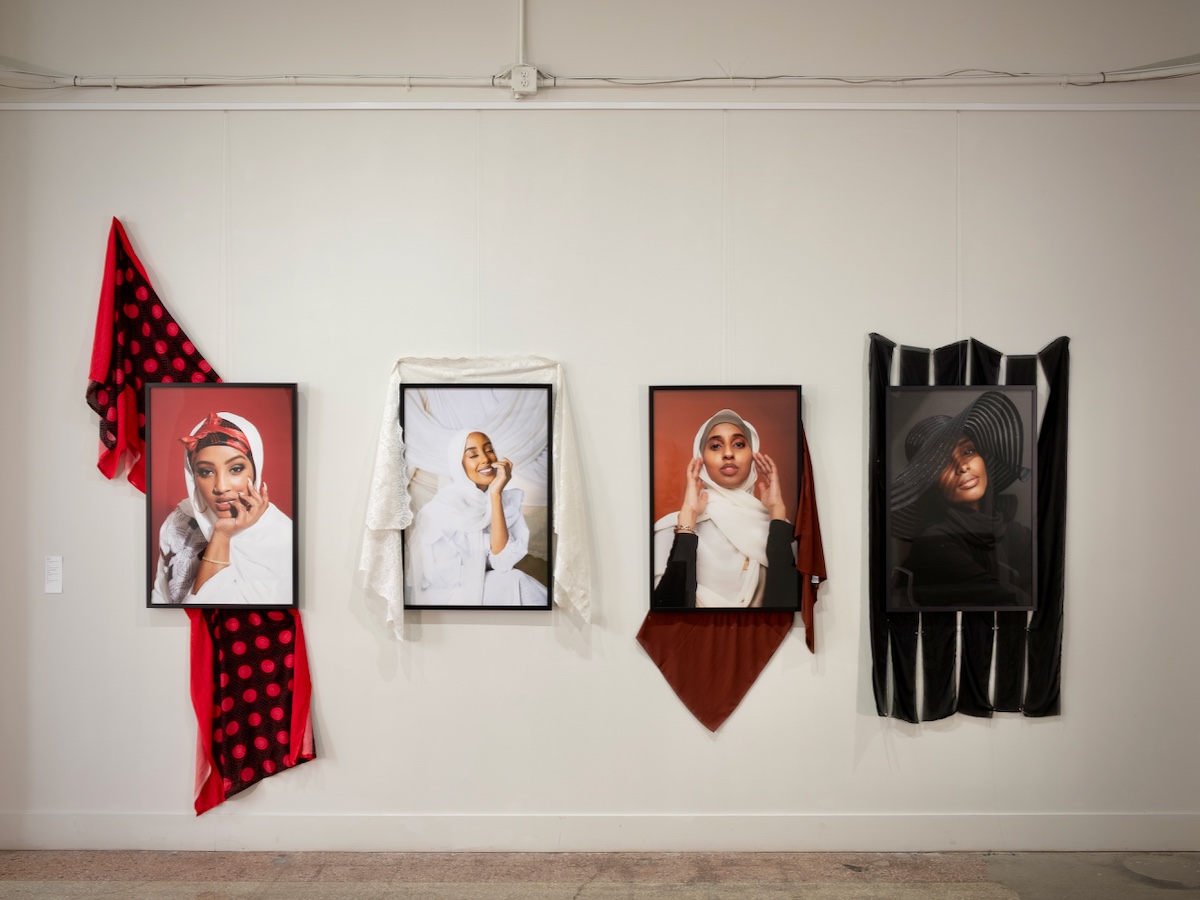When the pandemic ground Edmonton to a halt, Faisa Omer picked up her camera and began capturing what the world rarely showed her: the beauty of Black Muslim women.
“The day before everything shut down I just went to the tech store in Edmonton and bought all this equipment,” she recalls with a laugh.
The result was Qorrax soo bax/Sunrise, a photographic series born in her northside apartment and now exhibited at Latitude 53 as part of Diinsi Abuur: Broadcast Signals. The two-woman show is co-presented with fellow Somali-Canadian artist, Siham Salah, a landscape painter who blends the warmth of her East African homeland with the austerity of the Prairies.
Omer, an Ottawa-born counsellor and photographer, moved to Edmonton in 2018 to provide mental-health support to Somali youth. She had just completed photography studies at Algonquin College, but her camera sat mostly unused — until lockdowns gave her the time and space to experiment with self-taught lighting techniques and develop the artistic vision sparked years prior.
“I was gravitating towards Black Muslim women in particular,” she says. “Growing up in Canada, the beauty standard is nothing like how I look. In photography school, the models we saw weren’t Black or Muslim. I was just trying to portray a reality where we’re beautiful.”
Although not intended to be transgressive, Qorrax soo bax is quietly so. Draped in Somali textiles and framed with striking colour and poise, her subjects glow with glamour and sensuality — qualities often subdued by ultra-Orthodox Muslim interpretations of modesty. (Somalia is a quasi-theocracy with Islamic laws written into its constitution.)
“We really had to tone down our beauty,” she says of her upbringing, noting how even within her family the act of portraiture, let alone glamorized portraits, was initially met with discomfort. Capturing faces, she explains, is often interpreted as a sinful act of idolatry.
Diinsi Abuur: Broadcast Signals was first exhibited in 2023, alongside Salah’s paintings at Soomal House of Art, a Minneapolis, Minnesota gallery in the heart of the city’s “Little Mogadishu” neighbourhood. It was part of a cultural exchange coordinated by Somali-Minnesotan and Somali-Albertan communities. But for Omer, returning this work to Edmonton — its place of origin — is a full circle moment.
